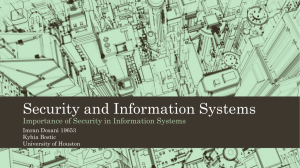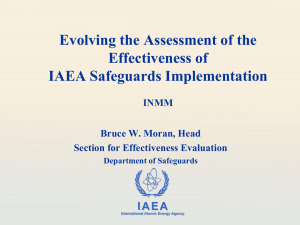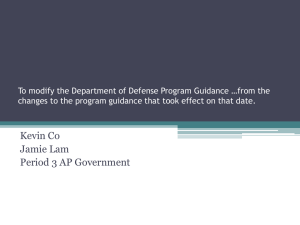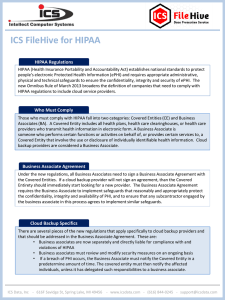Chapter 11 - Amazon Web Services
advertisement
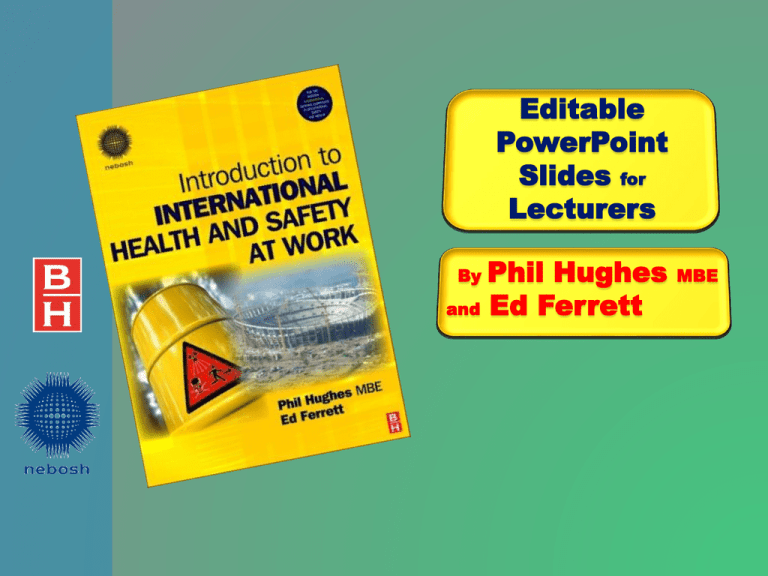
Editable PowerPoint Slides for Lecturers Phil Hughes and Ed Ferrett By MBE Chapter 11 Work equipment hazards and control Work equipment hazards and control After reading this chapter, you should be able to: 1. Outline general principles for selection, use and maintenance of work equipment 2. Outline the hazards and controls for hand tools 3. Describe the main mechanical and non-mechanical hazards of machinery 4. Describe the main methods of protection from machinery hazards. Figure 11.2 CE mark and typical declaration used in the European Union Figure 3 Work equipment hazards and control Figure 11.4 Bench mounted abrasive wheel Figure 11.6 Typical electrically powered compressor with air receiver Figure 11.7 Design features of equipment controls Figure 11.8 Emergency stop buttons Figure 11. 9 Typical hand tools Figure 11.10 Typical hand held power tools Figure 11.11(a) Electric percussion drill Figure 11(b) Heavy duty electric hammer drill Figure 11.12 Disc sander Figure 11.13(a) Rotary drum floor sander Figure 11.13(b) Orbital finishing sander Figure 11.14 Range of mechanical hazards Figure 11.15 Range of fixed guards Pedestal drill Figure 11 Adjustable guard for a rotating shaft such as a pedestal drill Guard adjusts itself as the saw cuts through the wood Figure 17 Self-adjusting guard on a circular saw for cutting wood Hinged guard activates the switch as it rotates Sliding guard activates the switch as it moves Figure 11.18 Typical sliding and hinged interlocking guards Figure 11.19 Schematic diagram of a telescopic trip device fitted to a radial drill Buttons need to be pressed at the same time to activate machine. Buttons are shrouded to prevent accidental starting Figure 20 Pedestal-mounted free-standing two-hand control device • The machines are provided with an all-enclosing case which prevents access to the internal moving, hot or electrical parts • The access doors are interlocked so that the machine is automatically switched off when gaining access to clear jams or maintain the machine. It is good practice to switch off when opening the machine • Internal electrics are insulated and protected to prevent contact • Regular inspection and maintenance should be carried out • The machine should be on the PAT schedule • Good ventilation in the machine room should be maintained Figure 11.21 Typical large office photocopier safeguards • Enclosed fixed guards surround the cutters with restricted access for paper only, which prevents fingers reaching the dangerous parts • Interlocks are fitted to the cutter head so that the machine is switched off when the waste bin is emptied • A trip device is used to start the machine automatically when paper is fed in • Machine should be on PAT schedule and regularly checked • General ventilation will cover most dust problems except for very large machines where dust extraction may be necessary • Noise levels should be checked and the equipment perhaps placed on a rubber mat if standing on a hard reflective floor Figure 11.22 Typical office shredder safeguards • Wheel should be enclosed as much as possible in a strong casing capable of containing a burst wheel • Grinder should be bolted down to prevent movement • An adjustable tool rest should be adjusted as close as possible to the wheel • Adjustable screen should be fitted over the wheel to protect the eyes of the operator. Goggles should also be worn • Only properly trained competent and registered people should mount an abrasive wheel • The maximum speed should be marked on the machine so that the abrasive wheel can be matched to the machine speed to ensure that the wheel permitted speed exceeds or equals the machine max speed • Noise levels should be checked and attenuating screens used if necessary • The machine should be on the PAT schedule and regularly checked • If necessary extract ventilation should be fitted to the wheel encasing to remove dust at source Figure 11.23 Typical bench mounted grinder safeguards • Motor and drive should be fitted with fixed guard • Machine should be bolted down to prevent movement • The spindle should be guarded by an adjustable guard, which is fixed in position during the work • A clamp should be available on the pedestal base to secure work-pieces • The machine should be on the PAT schedule and regularly checked • Cutting fluid, if used, should be contained and not allowed to get onto clothing or skin A splash guard may be required but is unlikely • Goggles should be worn by the operator Figure 11.24 Typical Pedestal drill safeguards • Machine should be designed to operate with the grass collection box in position to restrict access to the bottom blade trap. A warning sign should be fitted on the machine • On pedestrian-controlled machines the control handle should automatically stop the blade rotation when the operator’s hands are removed. It should take two separate actions to restart • Ride-on machines should be fitted with a device to automatically stop the blades when the operator leaves the operating position. This is normally a switch under the seat and it should be tested to ensure that it is functioning correctly and is not defective Figure 11.25 Typical cylinder mower for fine grass cutting safeguards • Drives and motor should be completely encased with a fixed guard • The machine should only be refuelled in the open air with a cool engine, using a suitable container for highly flammable fuel with a pourer to restrict spillage. No smoking should be allowed • Hot surfaces like the exhaust should be covered • Engine must only be run in the open air to prevent a build up of fumes • Noise levels should be checked and if necessary an improved silencer fitted to the engine and where required hearing protection used • Hay-fever-like problems from grass cutting are difficult to control. A suitable dust mask may be required to protect the user Figure 11.25 Typical cylinder mower for fine grass cutting safeguards • Moving engine parts should be enclosed • Rotating shafts should be encased in a fixed drive shaft cover • Rotating cutting head should have a fixed top guard, which extends out on the user side of the machine • Line changes must only be done either automatically or with the engine switched off • Engine should only be run in the open air • Refuelling should only be done in the open air using a proper highly flammable liquid container with pouring spout • Boots with steel toe cap and good grip, stout trousers and non-snagging upper garments should be worn in addition to hard hat fitted with full face screen and safety glasses Figure 11.26 Typical petrol driven brush cutter safeguards • If the noise levels are sufficiently high (normally they are with petrol-driven units) suitable hearing protection should be worn • Low-vibration characteristics should be balanced with engine power and speed of work to achieve the minimum overall vibration exposure. Handles should be of an antivibration type. Engines should be mounted on flexible mountings. Work periods should be limited to allow recovery • Washing arrangements and warm impervious gloves should be provided to guard against health risks • Properly constructed harness should be worn which comfortably balances the weight of the machine. Figure 11.26 Typical petrol driven brush cutter safeguards 1 – hand guard with integral chain brake; 2 – exhaust outlet directed to the RHS away from the operator; 3 – chain breakage guard at bottom of rear handle; 4 – chain designed to have low-kickback tendency; 5 – rubber antivibration mountings; 6 – lockout for the throttle trigger; 7 – guide bar (should be protected when transporting chainsaw); 8 – bottom chain catcher; 9 – PPE hand/eye/ear defender signs; 10 – on/off switch Figure 11. 27 Typical rear handle chainsaw components • May only be operated by fully trained, fit and competent people. Using chainsaws in tree work should require a relevant certificate of competence or National competence award, unless the users are undergoing such training and are adequately supervised. • Avoid working alone with a chainsaw. Where this is not possible, establish procedures to raise the alarm if something goes wrong. These may include: • regular contact with others using either a radio or telephone someone regularly visiting the work site • carrying a whistle to raise the alarm • an automatic signalling device which sends a signal at a preset time unless prevented from doing so • checks to ensure operators return to base or home at an agreed time Figure 11. 27 Typical rear handle chain saw safeguards • Moving engine parts should be enclosed • Electrical units should be double-insulated and cables fitted with residual current devices • The saw must be fitted with a top handle and effective brake mechanism • Chainsaws expose operators to high levels of noise and hand-arm Vibration which can lead to hearing loss and conditions such as vibration white finger. These risks can be controlled by good management practice including: • purchasing policies for low-noise/low-vibration chainsaws (e.g. with anti-vibration mounts and heated handles) • providing suitable hearing protection • proper maintenance schedules for chainsaws and protective equipment • giving information and training to operators on the health risks associated with chainsaws and use of PPE, etc. Figure 11. 27 Typical rear handle chain saw safeguards continued • Operators need to be trained in the correct chain sharpening techniques and chain and guide bar maintenance to keep the saw in safe working condition • Make sure petrol containers: • are in good condition and clearly labelled, with securely fitting caps. • do not allow operators to use discarded engine oil as a chain lubricant when starting the saw • Operators should maintain a safe working distance from other people and ensure the saw chain is clear of obstructions • Kickback is the sudden uncontrolled upward and backward movement of the chain and guide bar towards the operator • To avoid pull-in, always hold the spiked bumper securely against the tree or limbs • To avoid push-back, be alert to conditions that may cause the top of the guide bar to be pinched and do not twist the guide bar in the cut • Training in good manual handling techniques and using handling aids/tools should reduce the risk of back injuries • Avoid overhead and other service hazards Figure 11. 27 Typical rear handle chain saw safeguards continued Kevlar gloves, over-trousers and overshoes providing protection against chainsaw cuts. Helmet, ear and face shields protect the head Figure 11.28 Personal protective clothing for chain saw use • Access doors to the loading area, which gives access to the ram, should be positively interlocked with electrical and/or hydraulic mechanisms • The ram pressure should be dumped if it is hydraulic • Drives of motors should be properly guarded • If the waste unit is removed by truck, the ram mechanism should be interlocked with the unit so that it cannot operate when the unit is changed for an empty one • The machine should be regularly inspected and tested by a competent person • If the hydraulic ram can fall under gravity, mechanical restraints should automatically move into position when the doors are opened • Emergency stop buttons should be fitted on each side Figure 29 Typical retail compactor safeguards • Operating position for the hopper hoist should be designed so that anyone in the trapping area is visible to the operator. The use of the machine should be restricted to designated operators only. As far as possible the trapping point should be designed out. The hoist operating location should be fenced off just allowing access for barrows, etc., to the unloading area • Drives and rotating parts of engine should be enclosed • The drum gearing should be enclosed and persons kept away from the rotating drum, which is normally fairly high on large machines • No one should be allowed to stand on the machine while it is in motion • Goggles should be worn to prevent cement splashes • If petrol-driven, care is required with flammable liquids and refuelling; • Engines must only be run in the open air • Electric machines should be regularly checked and be on the PAT schedule • Noise levels should be checked and noise attenuation, for example silencers and damping, fitted if necessary Figure 30 Typical cement mixer safeguards • A fixed guard should be fitted to the blade below the bench • Fixed guards should be fitted to the motor and drives • An adjustable top guard should be fitted to the blade above the bench which encloses as much of the blade as possible. An adjustable front section should also be fitted • A riving knife should be fitted behind the blade to keep the cut timber apart and prevent ejection • A push stick should be used on short workpieces (under 300 mm) or for the last 300 mm of longer cuts • Blades should be kept properly sharpened and set with the diameter of the smallest blade marked on the machine Figure 31 Work Bench mounted circular saw - safeguards • Noise attenuation should be applied to the machine, for example damping, special quiet saw blades, and, if necessary, fitting in an enclosure. Hearing protection may have to be used • Protection against wet weather should be provided • The electrical parts should be regularly checked in addition to all the mechanical guards • Extraction ventilation will be required for the wood dust and shavings and suitable dust masks should be worn • Suitable warm or cool clothing will be needed when used in hot or cold locations • Space around machine should be kept clear Figure 31 Work Bench mounted circular saw safeguards continued

